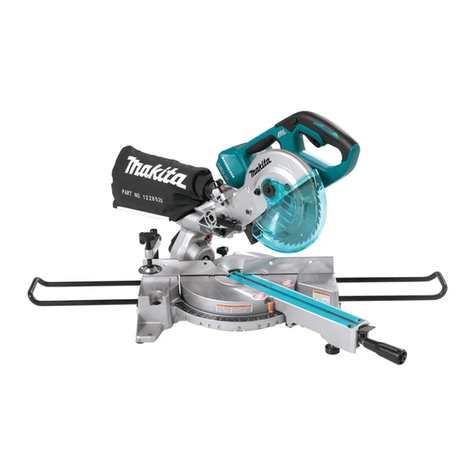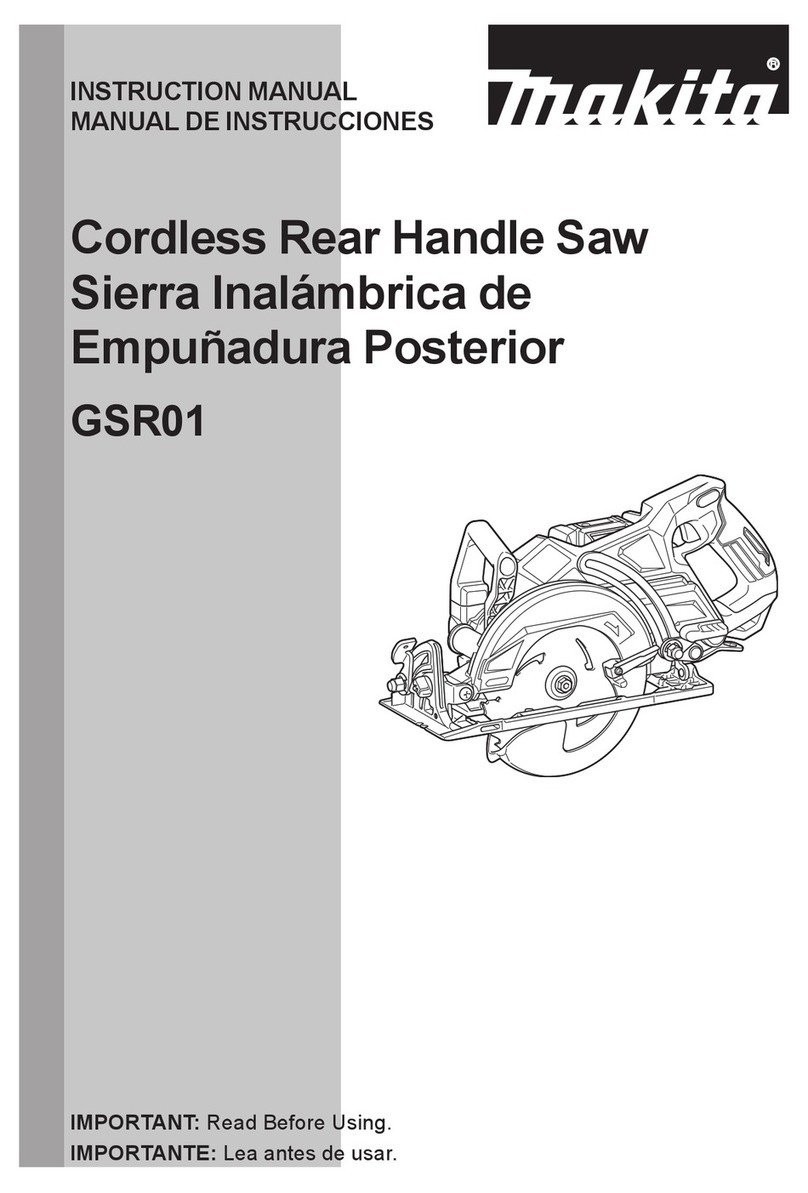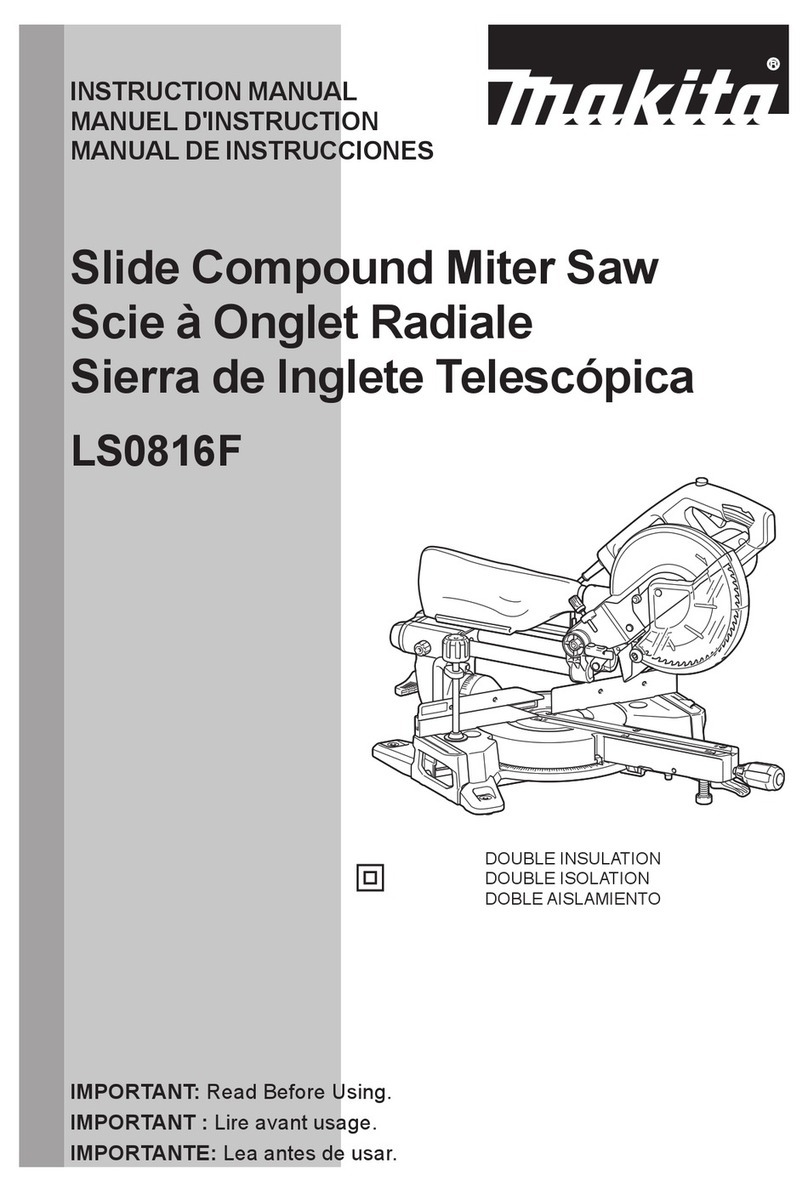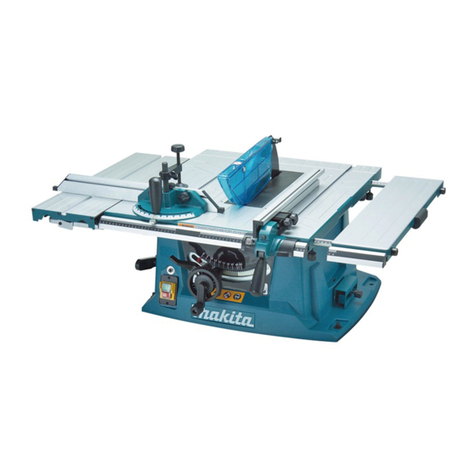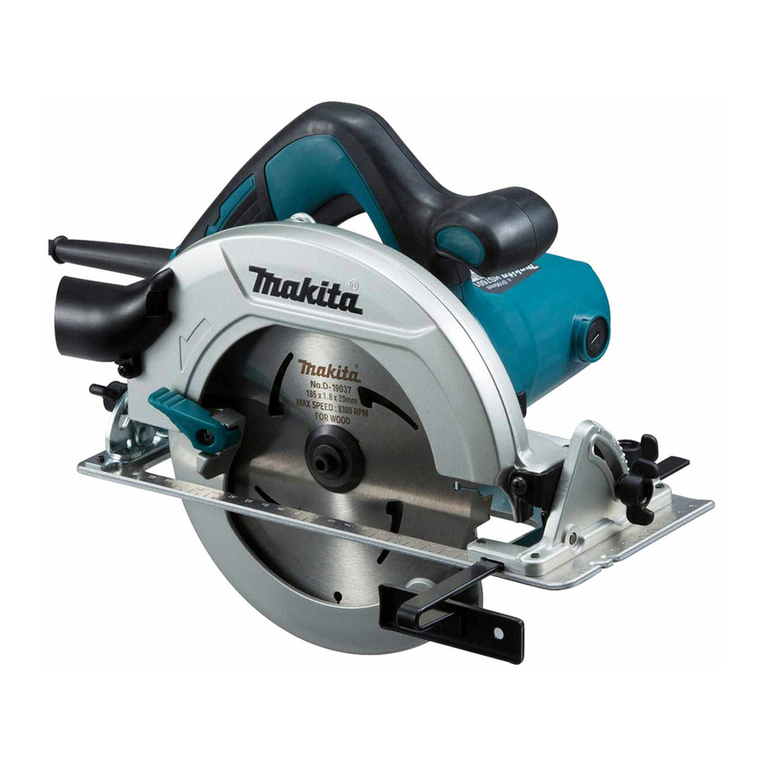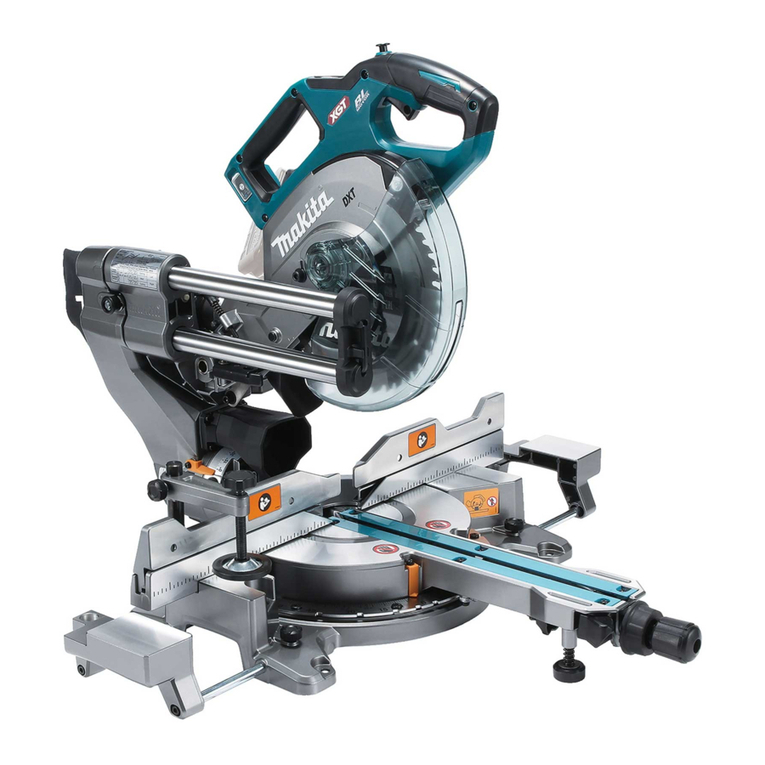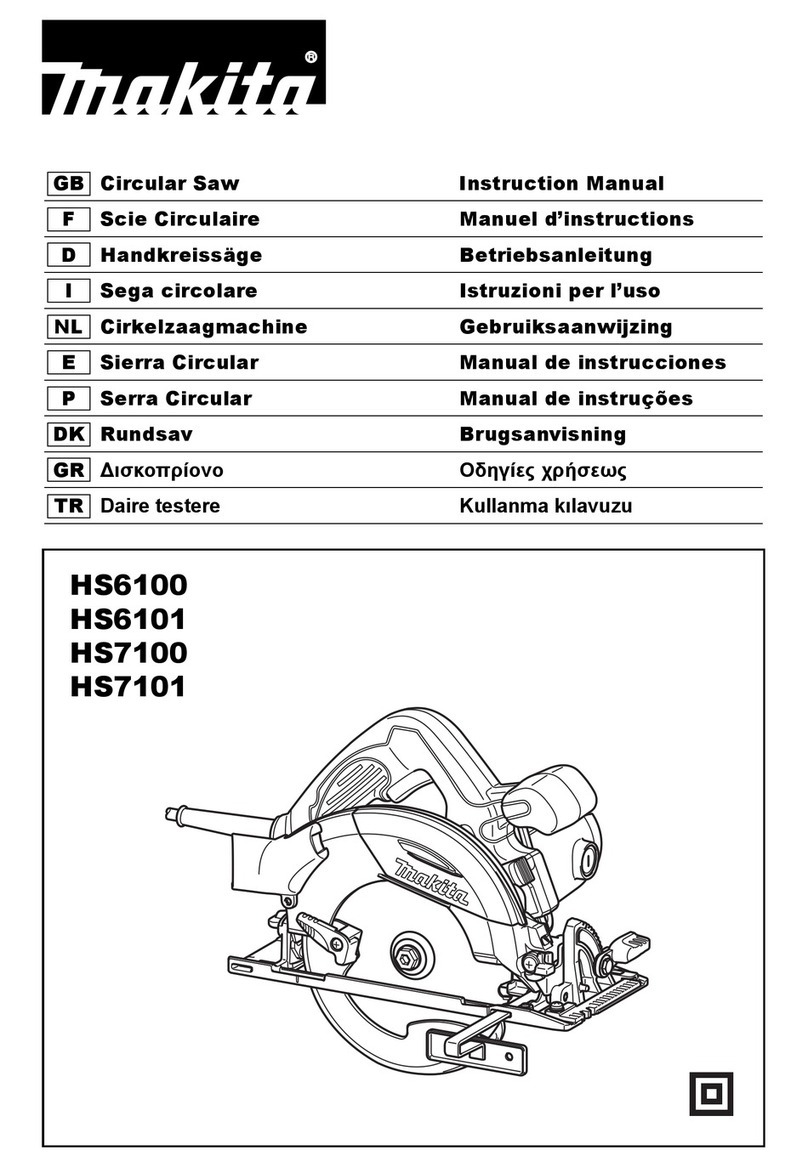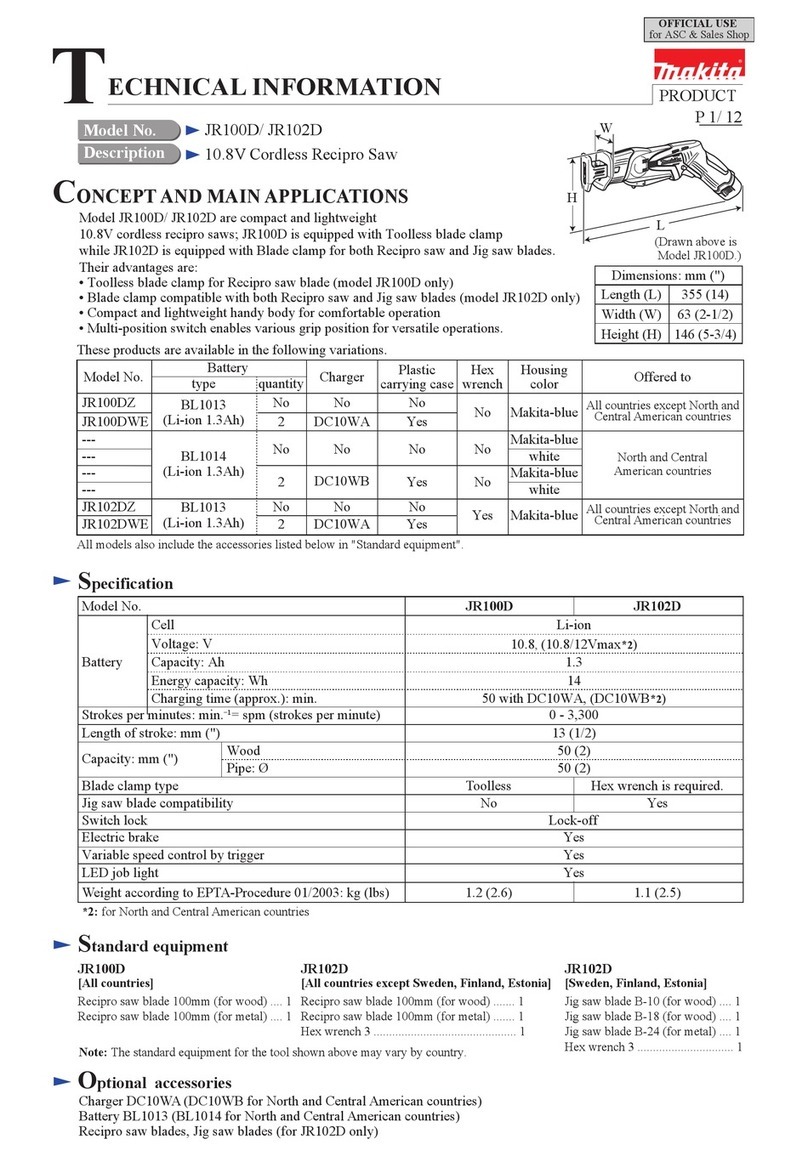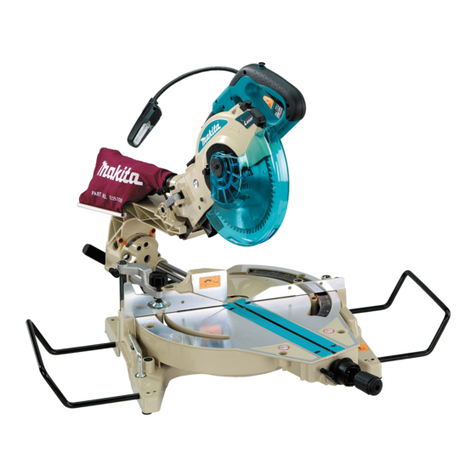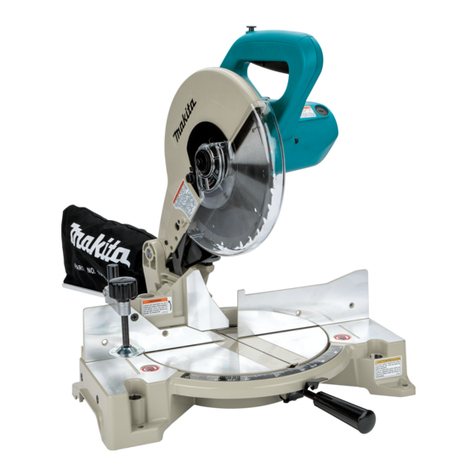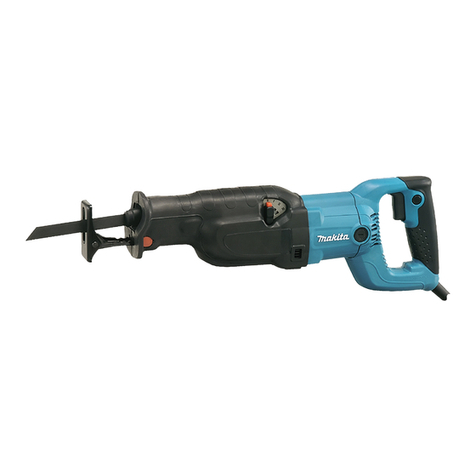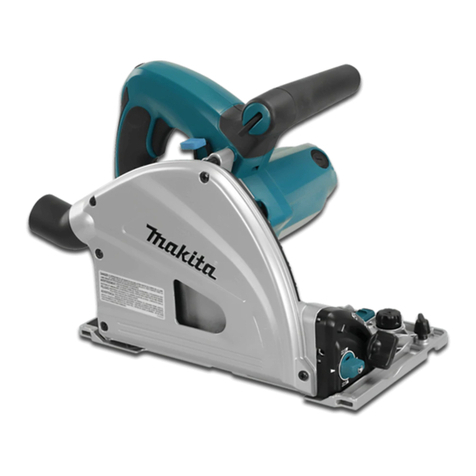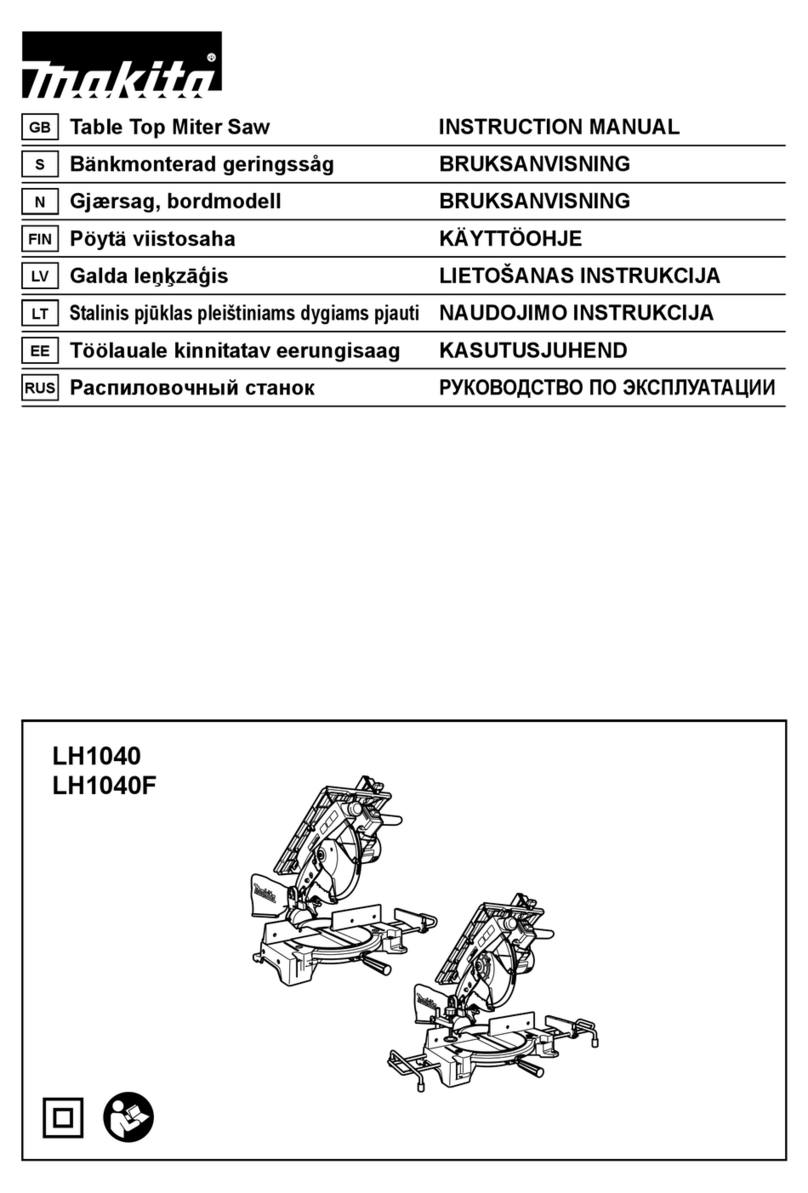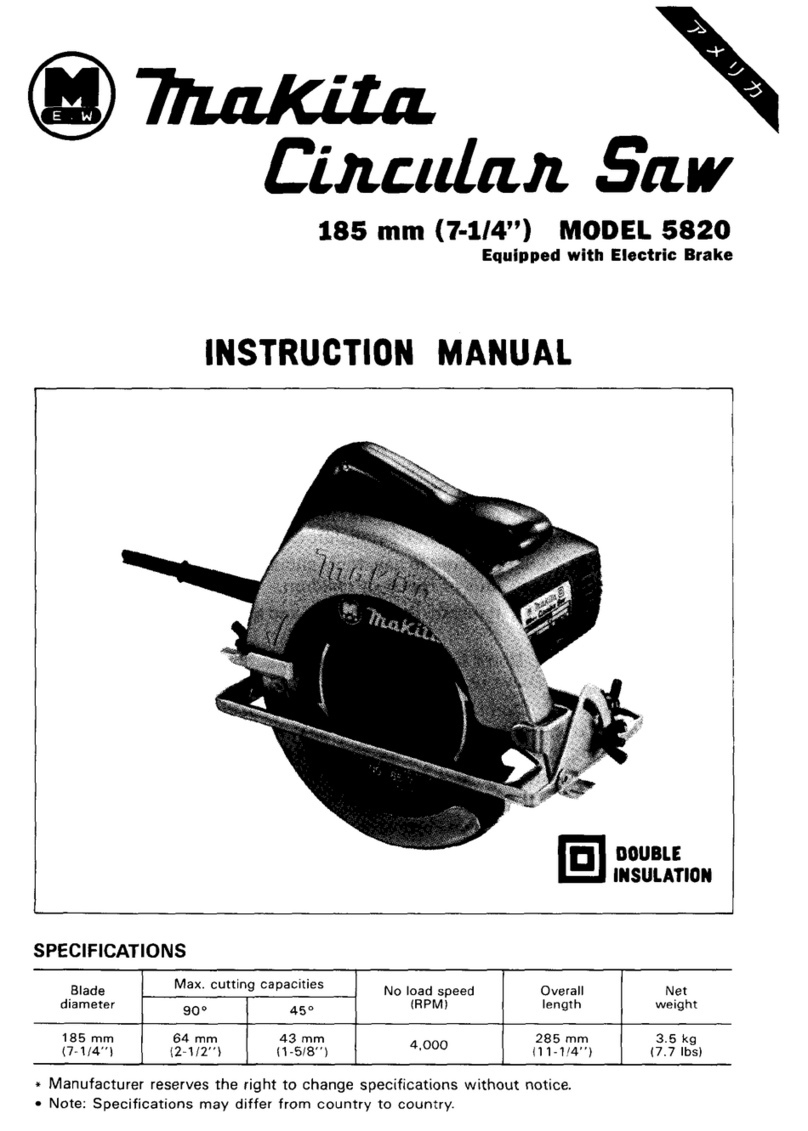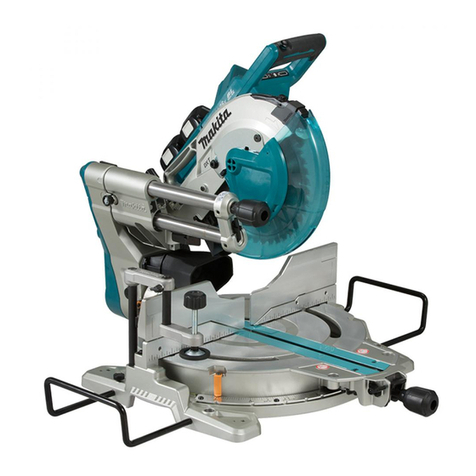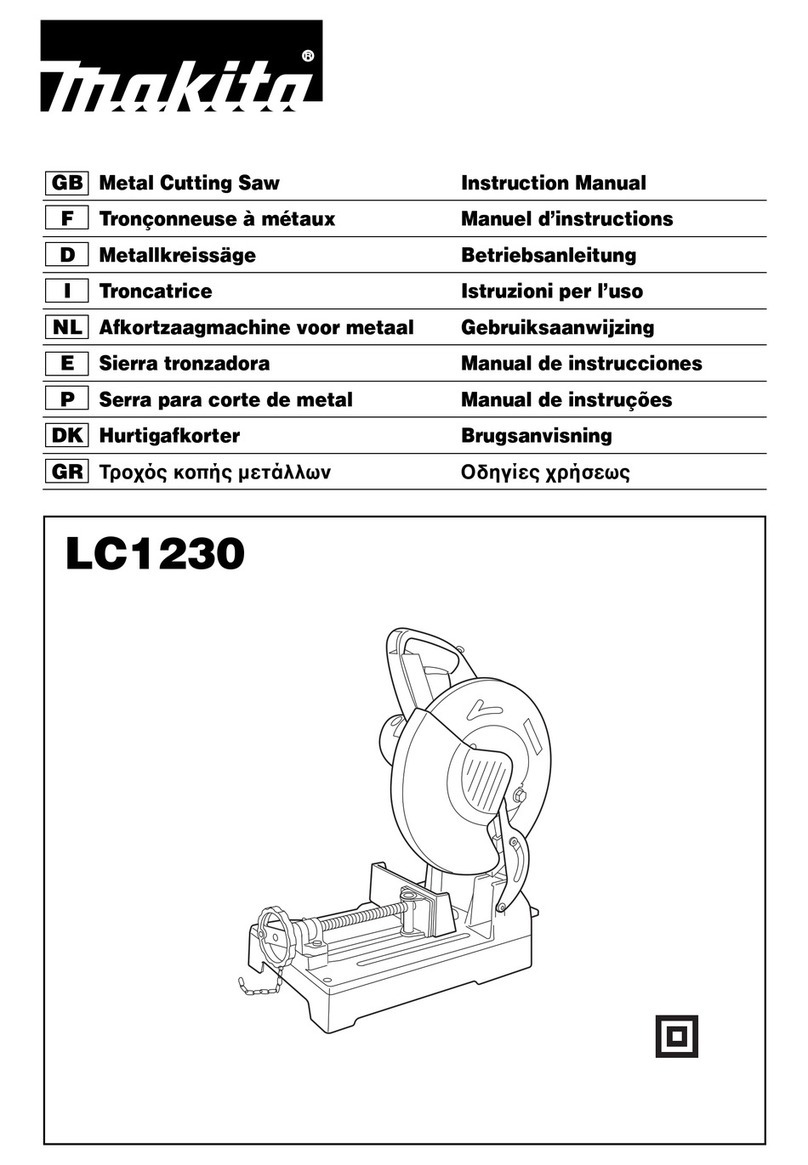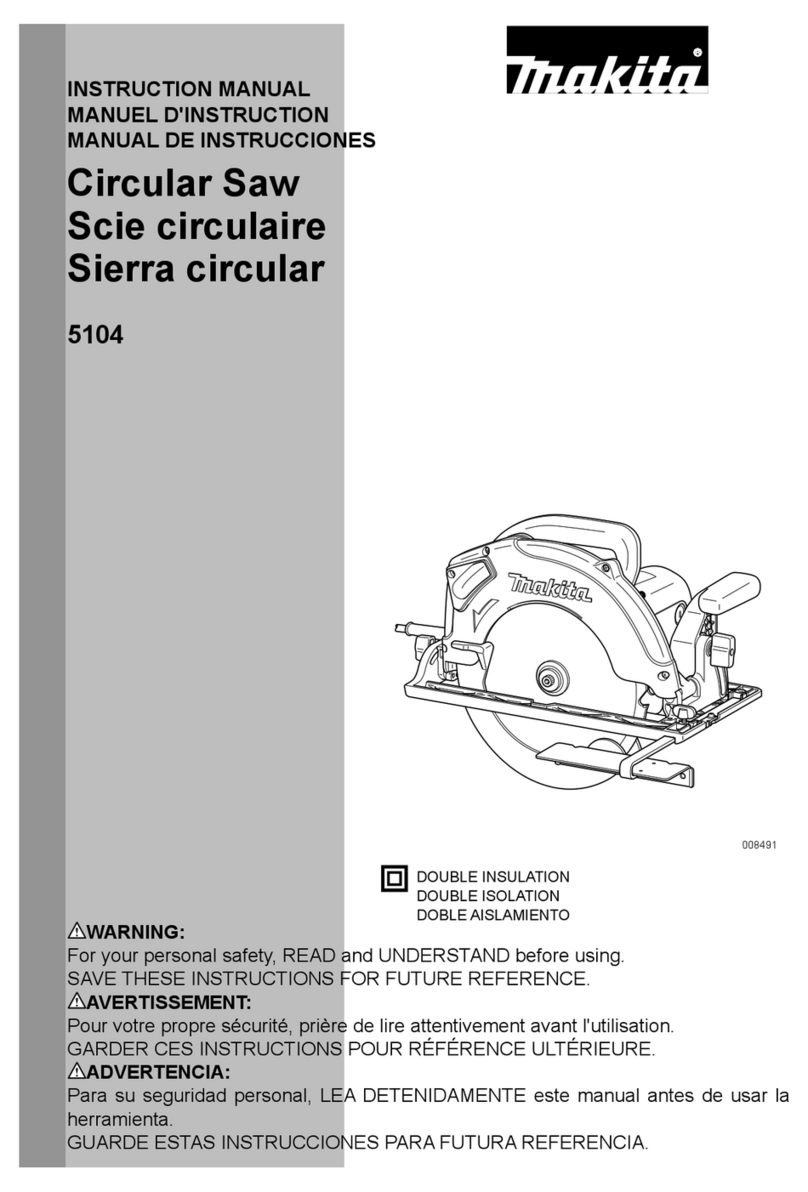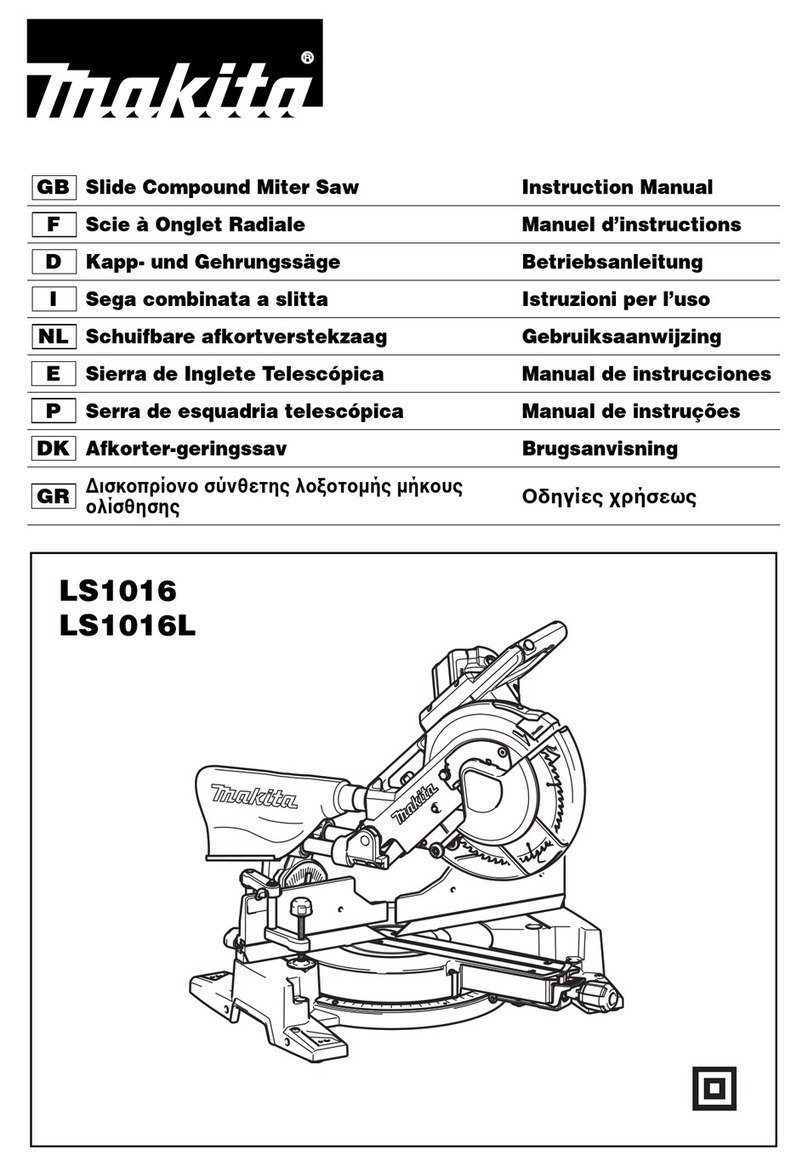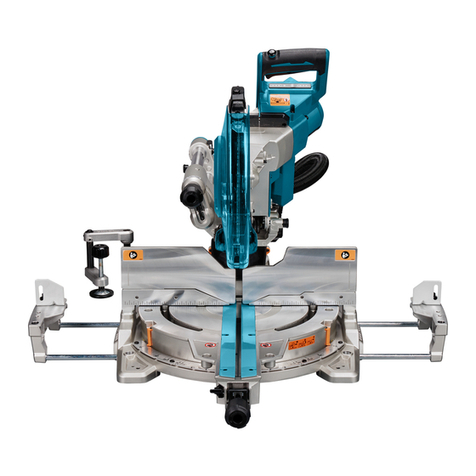10 ENGLISH
źІżLISHăĚЇrТРТЧКХăТЧstruМtТШЧsě
SPECIFICATIONS
Model: DLS714
Blade diameter 190 mm
Blade body thickness 1.3 mm - 2.0 mm
20 mm or 15.88 mm
Max. miter angle Left 47°, Right 57°
Max. bevel angle Left 45°, Right 5°
No load speed 5,700 min-1
Dimensions (L x W x H) 655 mm x 430 mm x 445 mm
Rated voltage D.C.36 V
Battery cartridge BL1815N, BL1820, BL1820B BL1830, BL1840, BL1840B, BL1850,
BL1850B
Net weight 13.0 kg 13.5 kg
Cutting capacities (H x W) with blade 190 mm in diameter
Miter angle Bevel angle
Őő°ăĚХОПtě 0° ő°ăĚrТРСtě
0° 40 mm x 300 mm 52 mm x 300 mm 40 mm x 300 mm
45 mm x 265 mm (NOTE 1) 60 mm x 265 mm (NOTE 1) –
45° (left and right) 40 mm x 212 mm 52 mm x 212 mm –
45 mm x 185 mm (NOTE 2) 60 mm x 185 mm (NOTE 2) –
57° (right) –52 mm x 163 mm –
–60 mm x 145 mm (NOTE 3) –
1. Max. Cutting capacity when using a wood facing 20 mm thickness
2. Max. Cutting capacity when using a wood facing 15 mm thickness
3. Max. Cutting capacity when using a wood facing 10 mm thickness
without notice.
• Weight, with battery cartridge, according to EPTA-Procedure 01/2003
Symbols
The following show the symbols used for the equip-
ment. Be sure that you understand their meaning before
use.
Read instruction manual.
holding the saw head down, after making
cuts, until the blade has come to a com-
plete stop.
-
riage fully and press down handle, then
push carriage toward the guide fence.
blade.
Always set SUB-FENCE to left position
when performing left bevel cuts. Failure to
Only for EU countries
Do not dispose of electric equipment or battery
pack together with household waste material!
In observance of the European Directives,
on Waste Electric and Electronic
Equipment and Batteries and Accumulators
and Waste Batteries and Accumulators
and their implementation in accordance
with national laws, electric equipment and
batteries and battery pack(s) that have
reached the end of their life must be col-
lected separately and returned to an envi-
ronmentally compatible recycling facility.
Intended use
The tool is intended for accurate straight and miter
cutting in wood.
Noise
The typical A-weighted noise level determined accord-
ing to EN61029:
Sound pressure level (LpA) : 88 dB(A)
Sound power level (LWA) : 97 dB (A)
Uncertainty (K) : 3 dB(A)

